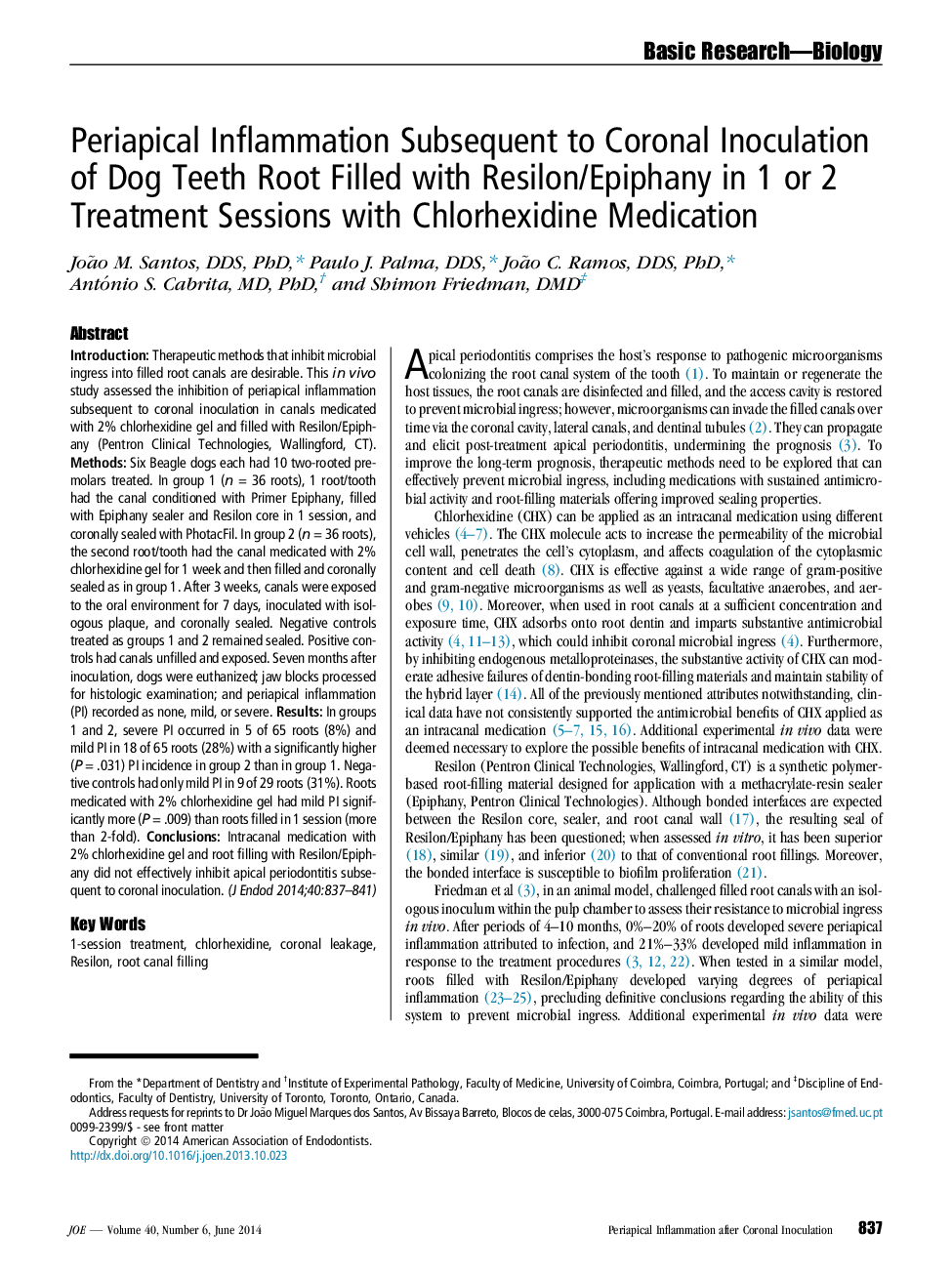| Article ID | Journal | Published Year | Pages | File Type |
|---|---|---|---|---|
| 3146868 | Journal of Endodontics | 2014 | 5 Pages |
IntroductionTherapeutic methods that inhibit microbial ingress into filled root canals are desirable. This in vivo study assessed the inhibition of periapical inflammation subsequent to coronal inoculation in canals medicated with 2% chlorhexidine gel and filled with Resilon/Epiphany (Pentron Clinical Technologies, Wallingford, CT).MethodsSix Beagle dogs each had 10 two-rooted premolars treated. In group 1 (n = 36 roots), 1 root/tooth had the canal conditioned with Primer Epiphany, filled with Epiphany sealer and Resilon core in 1 session, and coronally sealed with PhotacFil. In group 2 (n = 36 roots), the second root/tooth had the canal medicated with 2% chlorhexidine gel for 1 week and then filled and coronally sealed as in group 1. After 3 weeks, canals were exposed to the oral environment for 7 days, inoculated with isologous plaque, and coronally sealed. Negative controls treated as groups 1 and 2 remained sealed. Positive controls had canals unfilled and exposed. Seven months after inoculation, dogs were euthanized; jaw blocks processed for histologic examination; and periapical inflammation (PI) recorded as none, mild, or severe.ResultsIn groups 1 and 2, severe PI occurred in 5 of 65 roots (8%) and mild PI in 18 of 65 roots (28%) with a significantly higher (P = .031) PI incidence in group 2 than in group 1. Negative controls had only mild PI in 9 of 29 roots (31%). Roots medicated with 2% chlorhexidine gel had mild PI significantly more (P = .009) than roots filled in 1 session (more than 2-fold).ConclusionsIntracanal medication with 2% chlorhexidine gel and root filling with Resilon/Epiphany did not effectively inhibit apical periodontitis subsequent to coronal inoculation.
